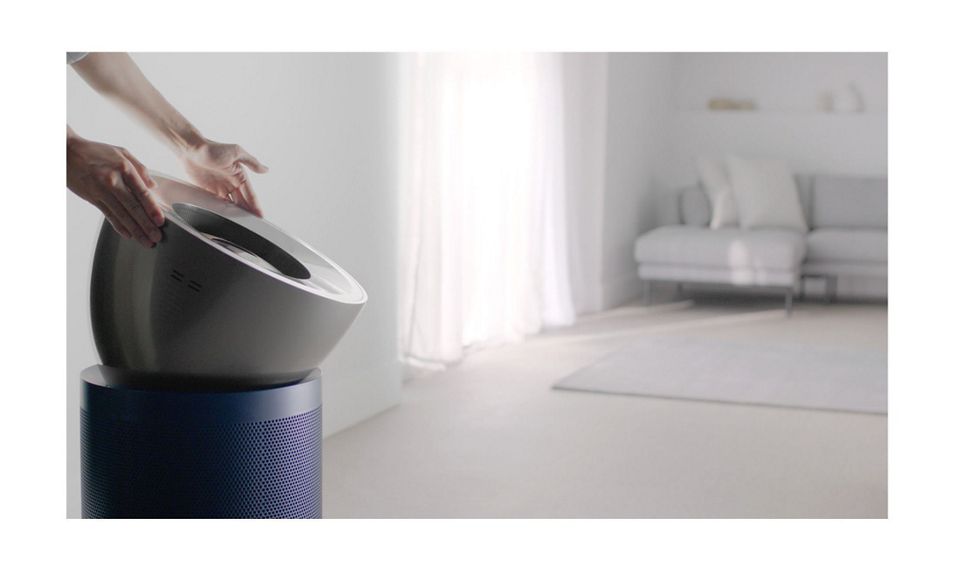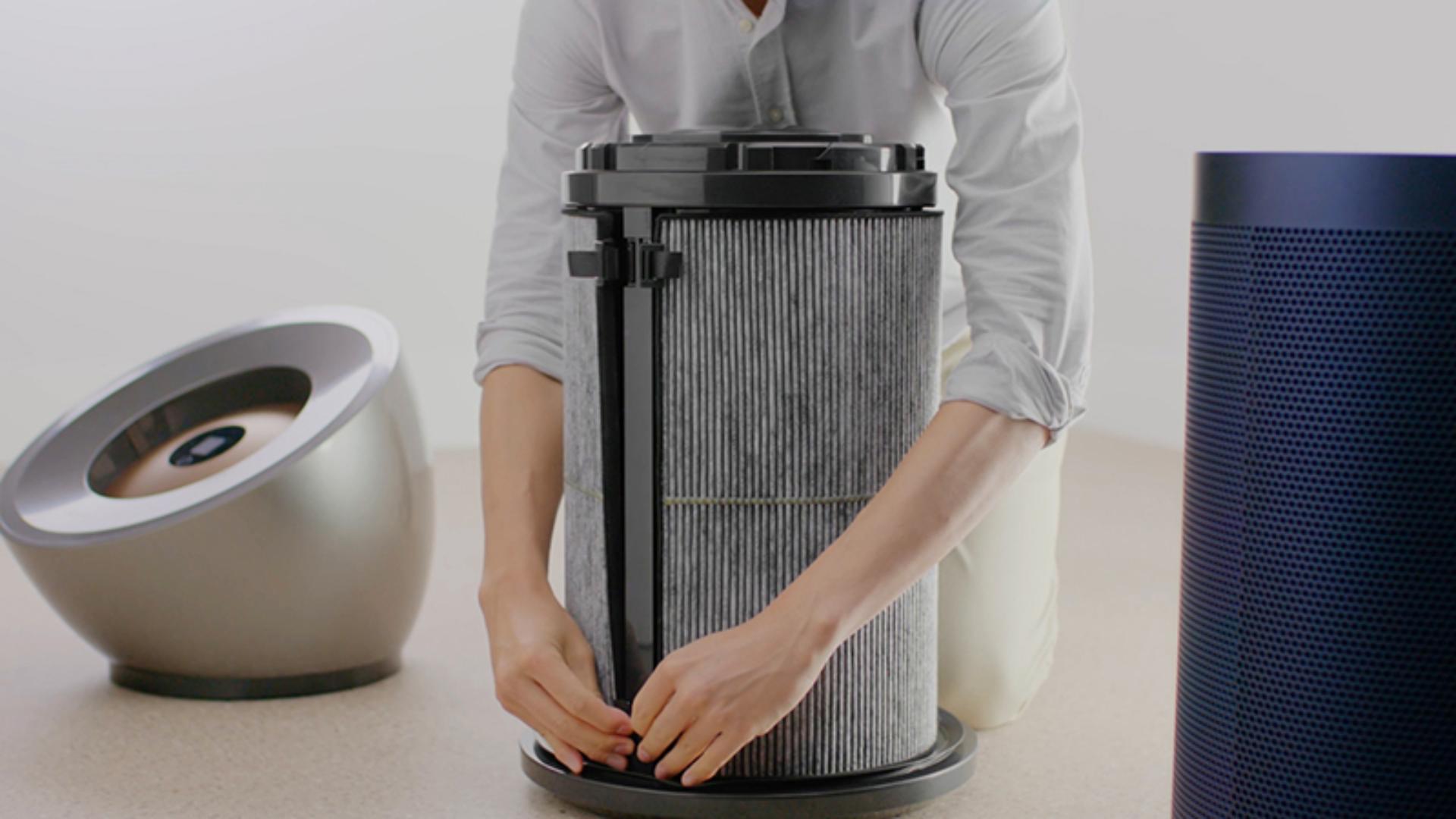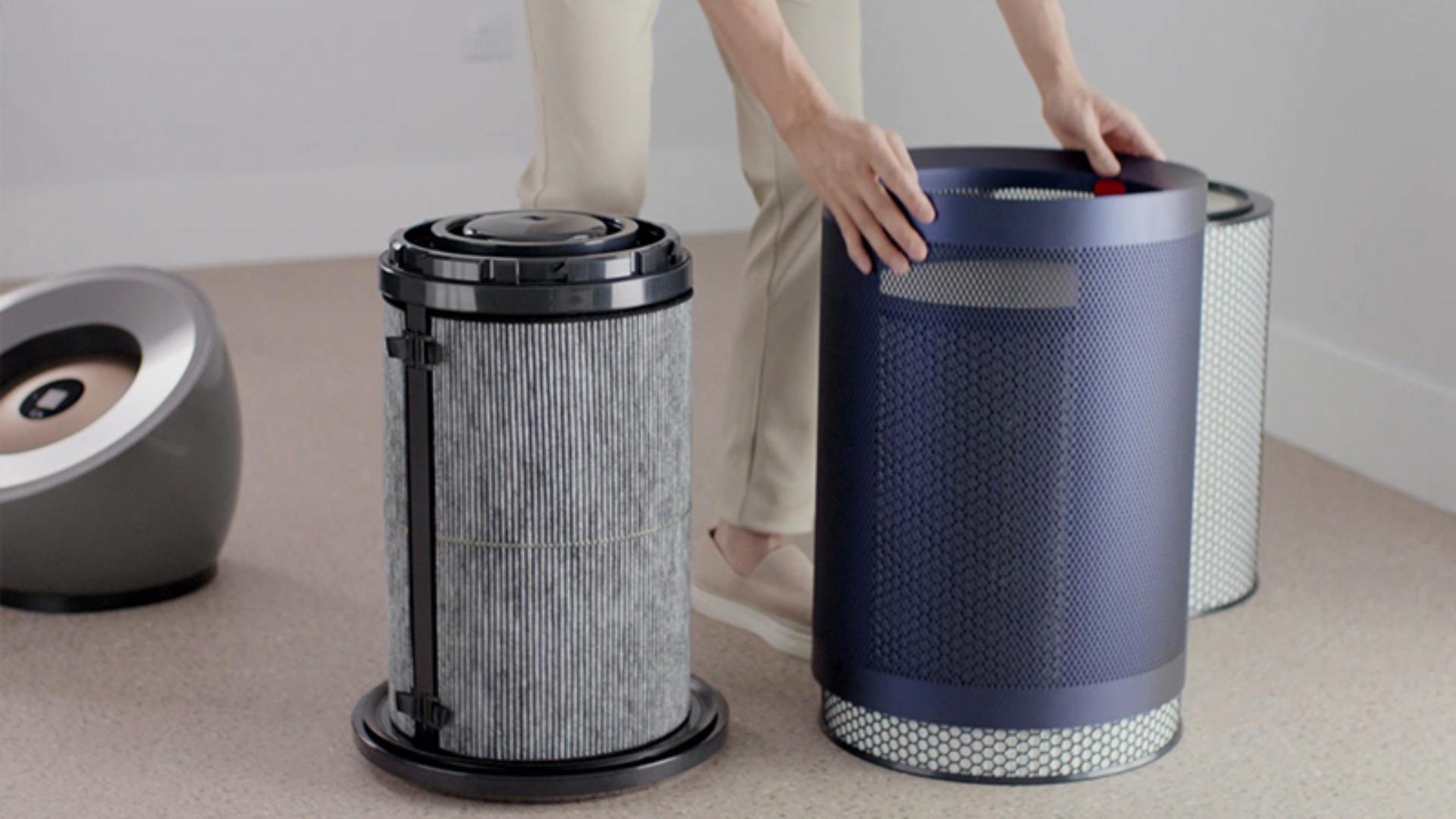Support for your Dyson HEPA Big+Quiet Formaldehyde purifier
Here you can find helpful tips, video guides and advice.
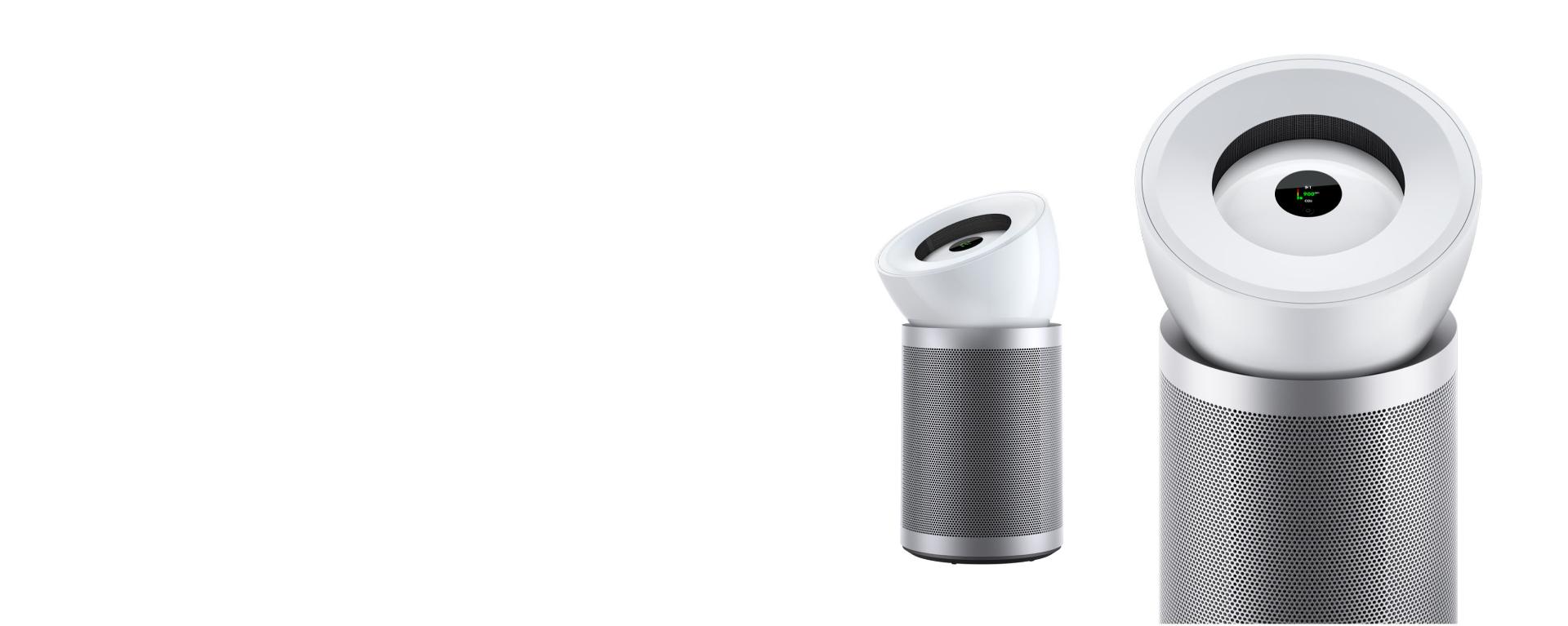
Setting up your purifier
Quickly set up your purifier for the first time or follow the video for basic set-up at a later date.
User manual
Download your Dyson HEPA Big+Quiet Formaldehyde user manual

7.7MB
Understanding the LCD screen
The LCD screen displays the fan speed setting and the CO₂ level in the room – reporting it in real time.
-
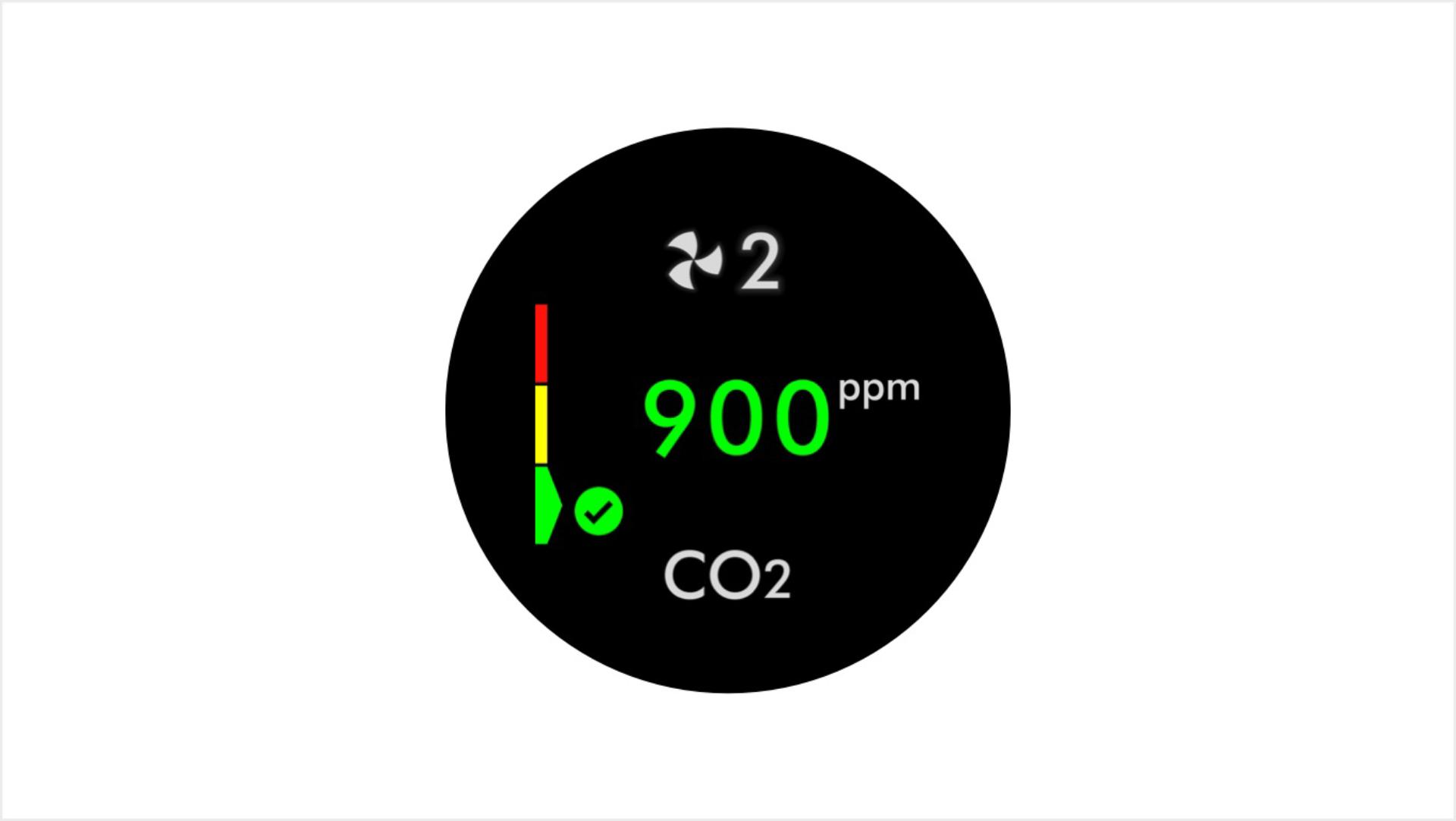
Low CO₂
CO₂ is at a safe level.
-
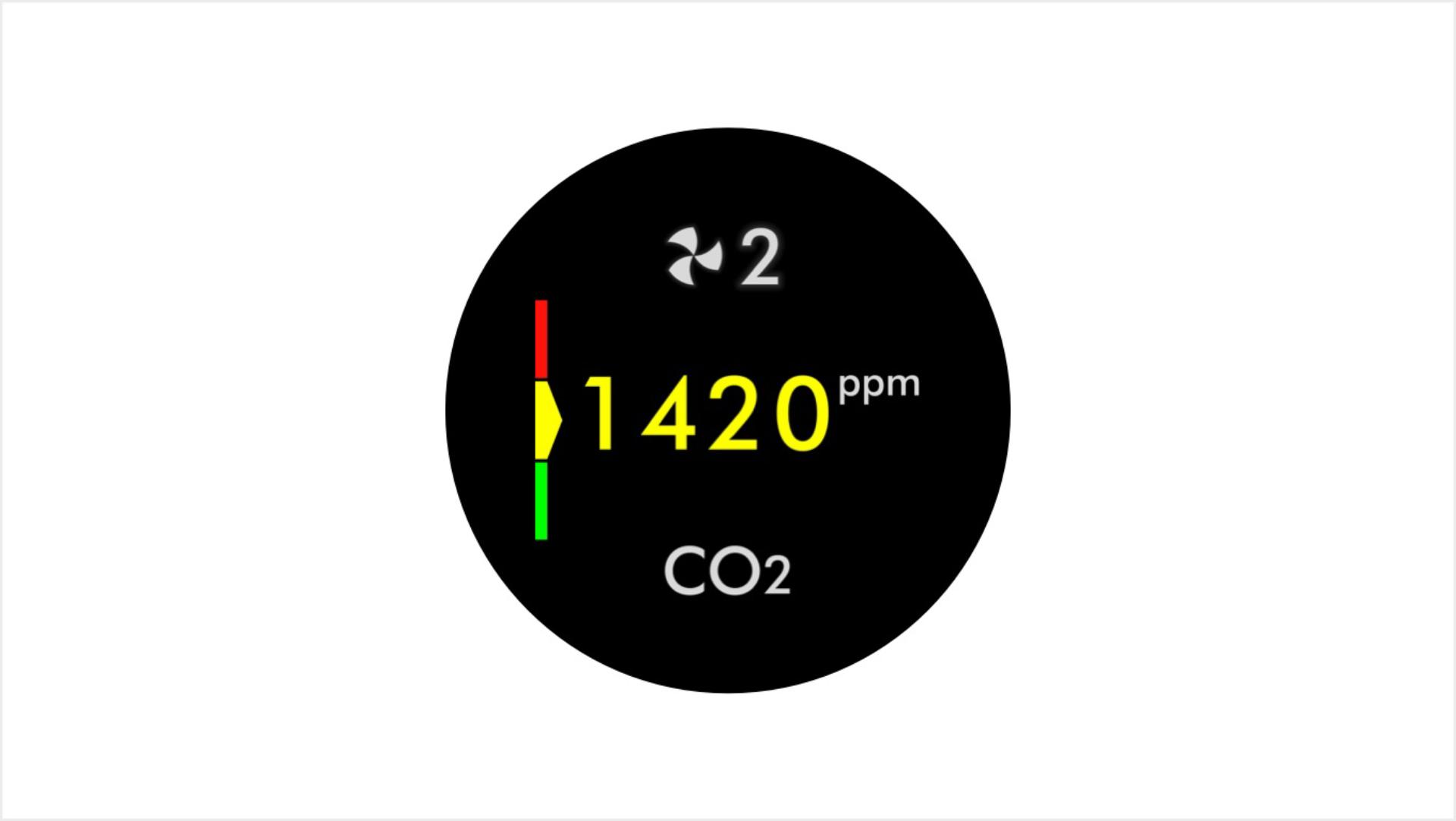
Medium CO₂
CO₂ is building up. It may be advisable to take preventative measures such as opening a door or window.
-
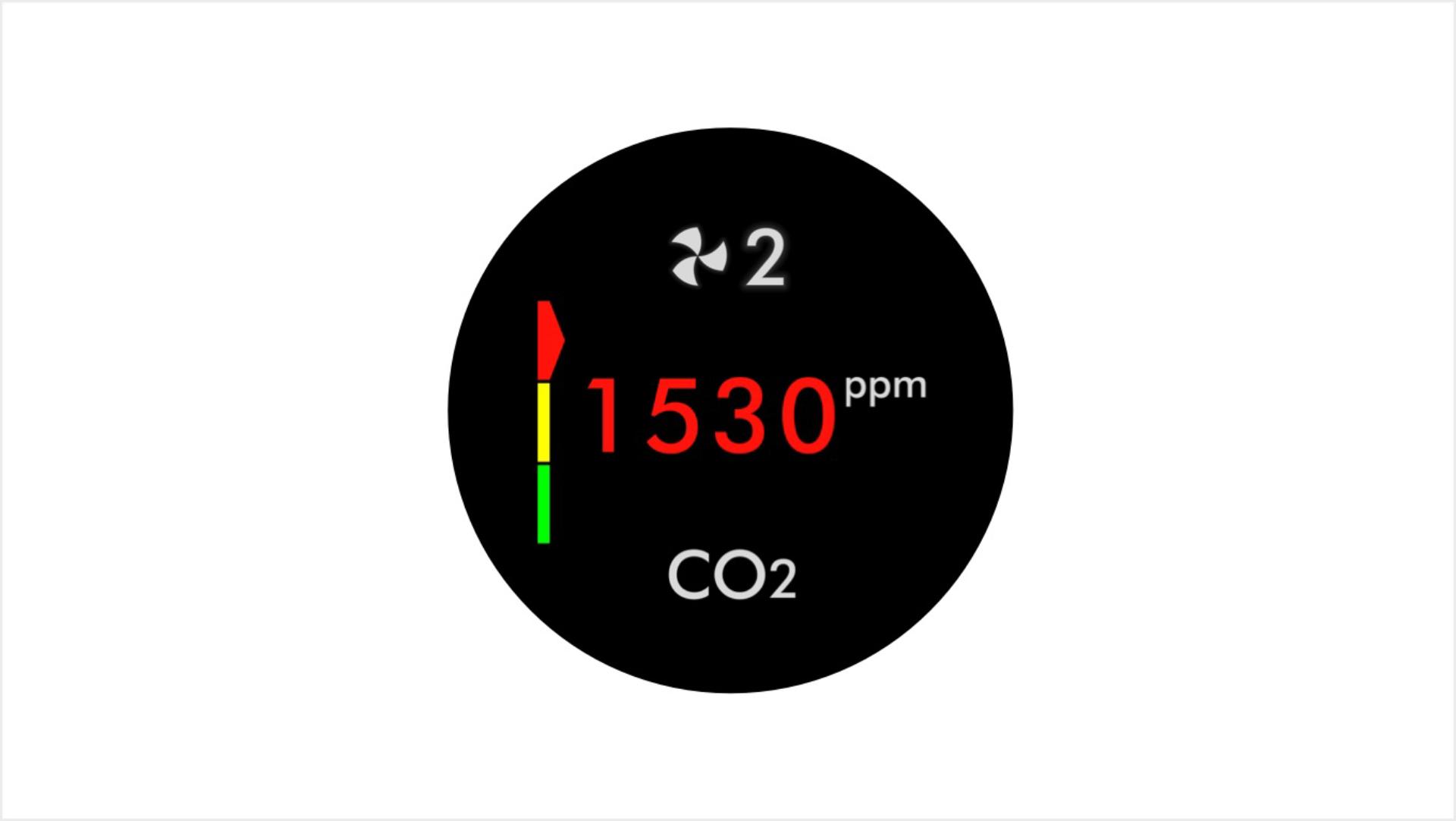
High CO₂
CO₂ has built up to a level of concern. It's advisable to take action, like opening a door or window.
Maintaining your purifier
Filter care for optimum performance.
-
Replacing the carbon filter
8760 hours of use To keep your carbon filter working effectively, we recommend changing it at least every 8760 hours of use, or sooner if necessary.
-
Replacing the HEPA filter
The fully sealed HEPA filter only needs replacing every 21900 hours of use.3 Located in the outer cover, it’s quick and easy to change.
Frequently asked questions
Airflow speed 2 puts the purifier into maximum performance mode. Airflow speed 1 can be used for an even quieter experience to reduce disturbance in and around your business.
Our latest purifier is acoustically engineered to operate quietly – even at its highest power setting. So it reduces your exposure to pollution, without disturbing you at the office or in the classroom. It records just 55dBA of sound power at full speed.
Your Dyson HEPA Big + Quiet Formaldehyde air purifier is engineered to purify a whole room. 6 When placing the machine, make sure there's at least a few feet of clearance on all sides, so that the air can circulate effectively. Place away from air vents and windows.
It depends on the CO₂ levels within your business at any one time. Our CO₂ monitor will alert you when levels are high – meaning it's time to increase ventilation by opening a window. 7 If you're worried about outdoor air pollution, remember that your purifier will deal with them.
In Dyson’s latest purifiers, it’s not just the filter that meets HEPA H13 standard, it’s the whole purifier. 8 So they don’t just capture pollutants, they prevent them from leaking back into the air you breathe. High-pressure seals at 24 critical points, combined with Dyson’s fully-sealed filtration system, means our whole purifier meets HEPA H13 standard. So what goes inside, stays inside.
Our current purifiers still achieve HEPA H13 grade filtration. However, Dyson engineers are relentless when it comes to pushing the boundaries, which is why our latest purifiers feature further development, always providing the best possible purification to the end user.
Some manufacturers publish dB readings based on Sound Pressure levels, which can be easily manipulated by changes in the environment. They might also be tested at low fan speeds which can limit purification performance.
At Dyson we measure and publish Sound Power levels dB(A) – the pure reading taken directly from the machine – at maximum fan speed, where purification is at its optimum.
Formaldehyde is a potentially harmful chemical found in many household products. A volatile gas, it can emit for years from woods, glues and fabrics found in household flooring and furniture. Particularly difficult to capture, it can quickly build up unseen and keep polluting for years.
Many purifiers only have active carbon filters. But carbon is not designed to deal with formaldehyde – a pollutant which is particularly difficult to capture. This is because the pores can be too large for formaldehyde molecules and other gas molecules with higher adsorption forces tend to displace it. Our unique catalytic filter destroys formaldehyde permanently. 9
Increased CO₂ levels can impact cognitive function. Our latest purifier senses and reports CO₂ levels and notifies when they exceed recommended levels, alerting on the LCD screen when to ventilate. 7
It's our business to understand air pollution
So it's yours that doesn't suffer. The bottom line is that pollutants can build up inside commercial environments. Many items, from flooring and furniture, to printer emissions and building materials, can release microscopic particles and gases. This includes formaldehyde, which can keep emitting over time. Dyson Big+Quiet Formaldehyde automatically removes and destroys it, continuously.

Common indoor pollutants
-

Formaldehyde
This volatile gas can emit from the woods, glues and fabrics found in flooring and furniture.
-

Pollen and allergens
Plants and flowers may release microscopic pollen into the air.
-

Outdoor air pollution
Tree pollen, vehicle exhaust fumes and particulate matter can enter and get trapped indoors.
-

VOCs
Volatile Organic Compounds may be released as gaseous chemicals from paint and printers.
-

Ultrafine particles
PM0.1 from exhaust fumes can penetrate indoors or emit from generators and appliances.
-

Odours
Odours from air fresheners and cooking can affect the air we breathe indoors.
Purify the air with fully-sealed HEPA H13 filtration1
An advanced 360° HEPA H13 filter, three times larger than its predecessor2, captures particles such as dust and allergens and lasts up to 21,900 hours of use.3 A carbon filter captures gases4 and a unique catalytic filter destroys formaldehyde.5 And because the purifier is fully sealed, what goes inside stays inside.1
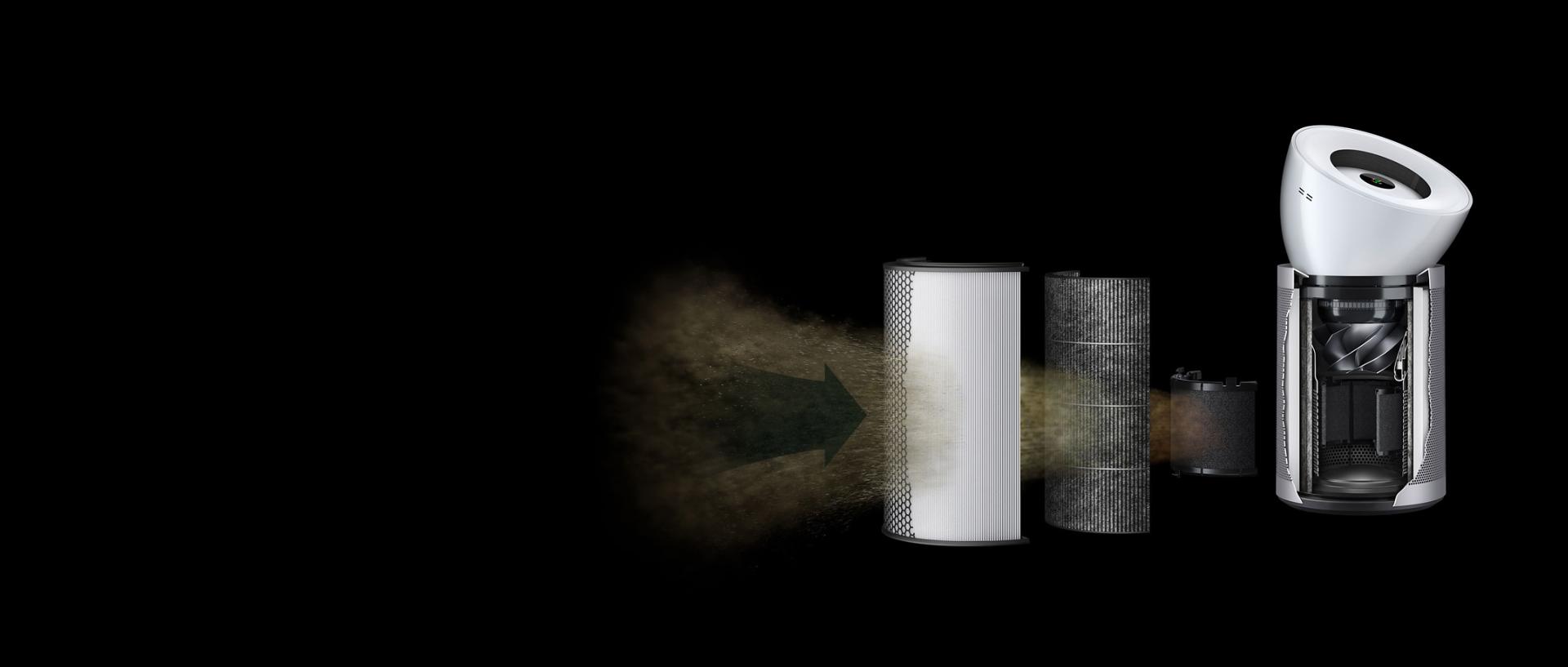
1Particle challenge by DEHS oil specified in EN1822 within a chamber specified in ASTM F3150. Tested in Max Mode, for whole machine efficiency above 99.95%.
2Three times larger than the HEPA filter used in Dyson Purifier Cool Formaldehyde purifier (TP09).
3Filter life is determined by dividing total dust load capacity by annual dust load. Annual dust load was calculated using GB/T 18801 daily mass formula. Results may vary in practice.
4Gas capture rates may vary in practice.
5Third party full machine testing based on GB/T 18801-2015 formaldehyde cumulative clean mass testing with continuous injection until plateau of formaldehyde CADR is achieved. Results may vary in practice.
6Test completed in a 70 m2 (11.9m x 5.9m) room with the purifier placed in one corner and source of pollution in opposite corner. The room had 45 sensors to determine PM2.5 distribution and purification. Results may vary in practice.
7Levels defined by Dyson based on scientific literature (Lowther et al. (2021) Environments). Ventilation alert when CO2 levels are 1500ppm or above.
8Particle challenge by DEHS oil specified in EN1822 within a chamber specified in ASTM F3150. Tested in Max Mode at IBR US, for whole machine efficiency above 99.95%.
9Third party full machine testing based on GB/T 18801-2015 formaldehyde cumulative clean mass testing with continuous injection until plateau of formaldehyde CADR is achieved. Results may vary in practice.
